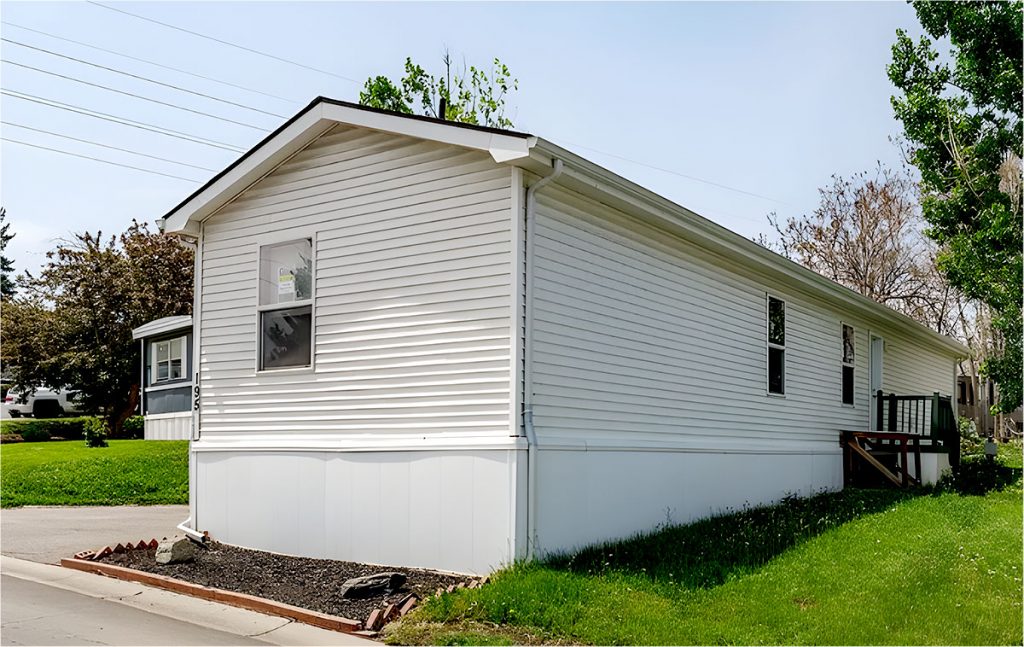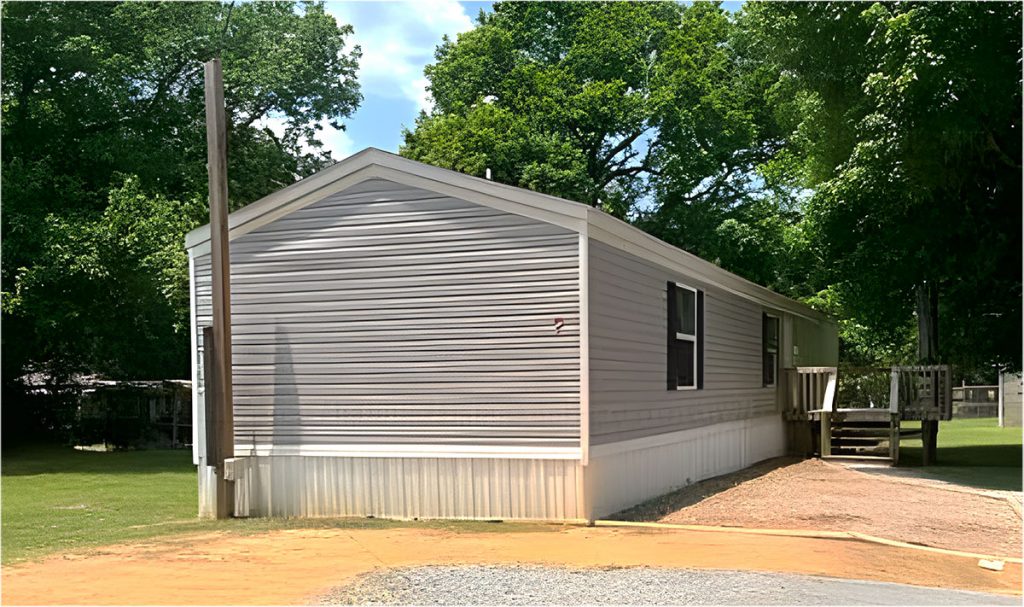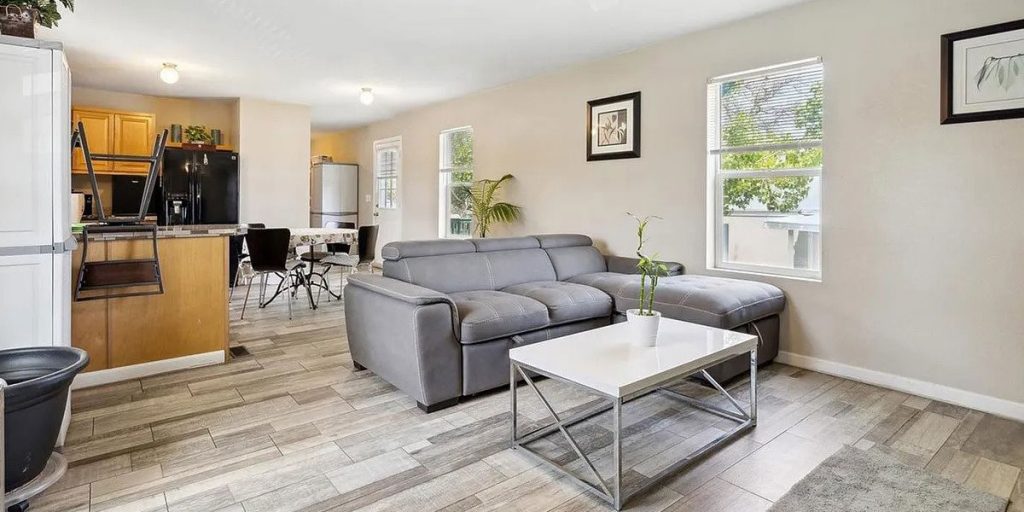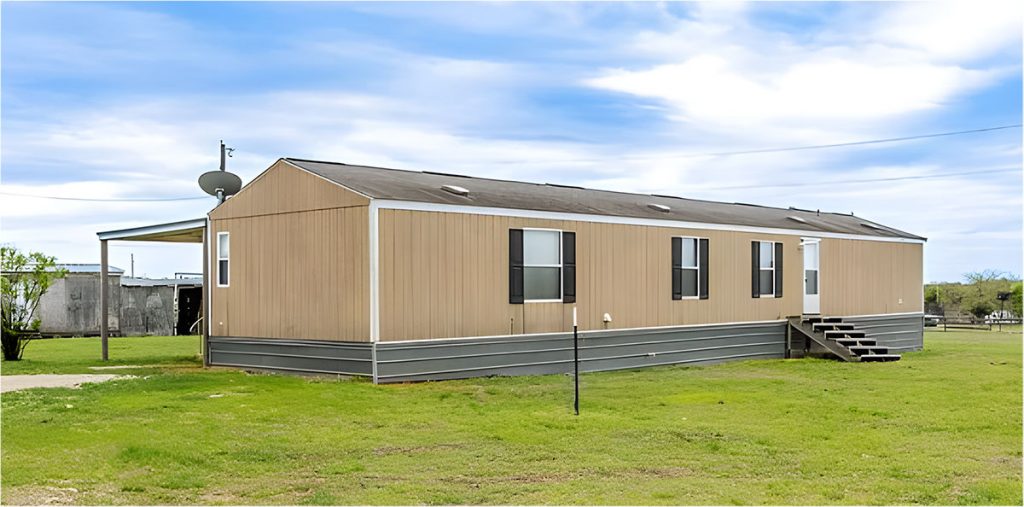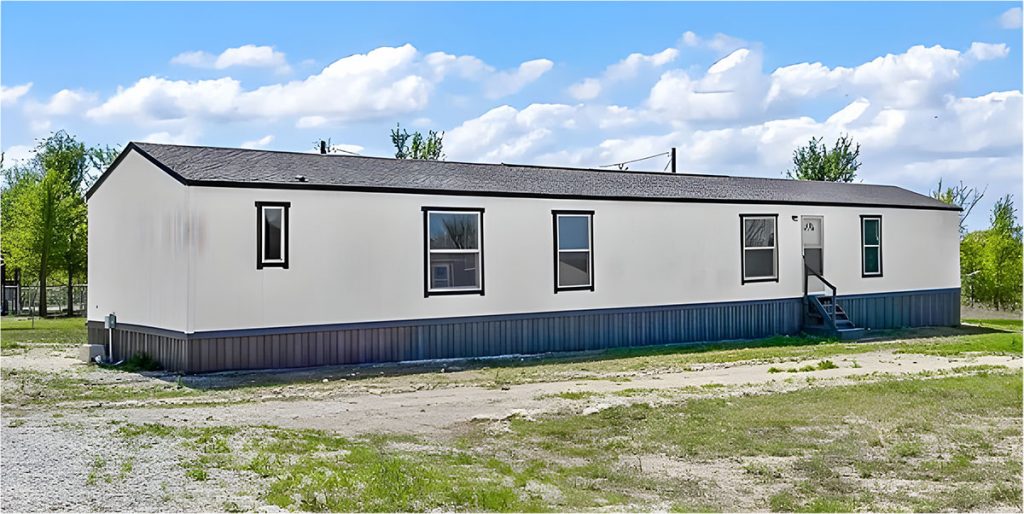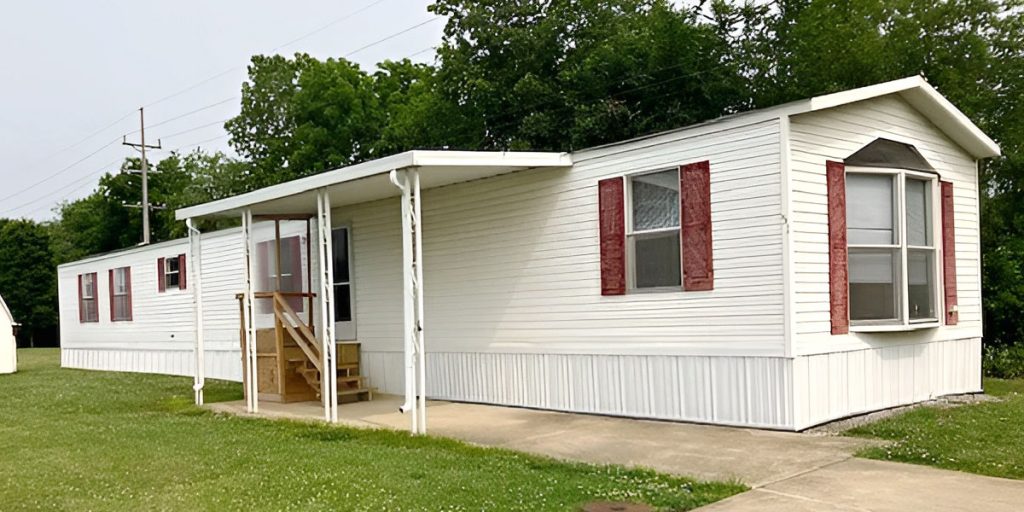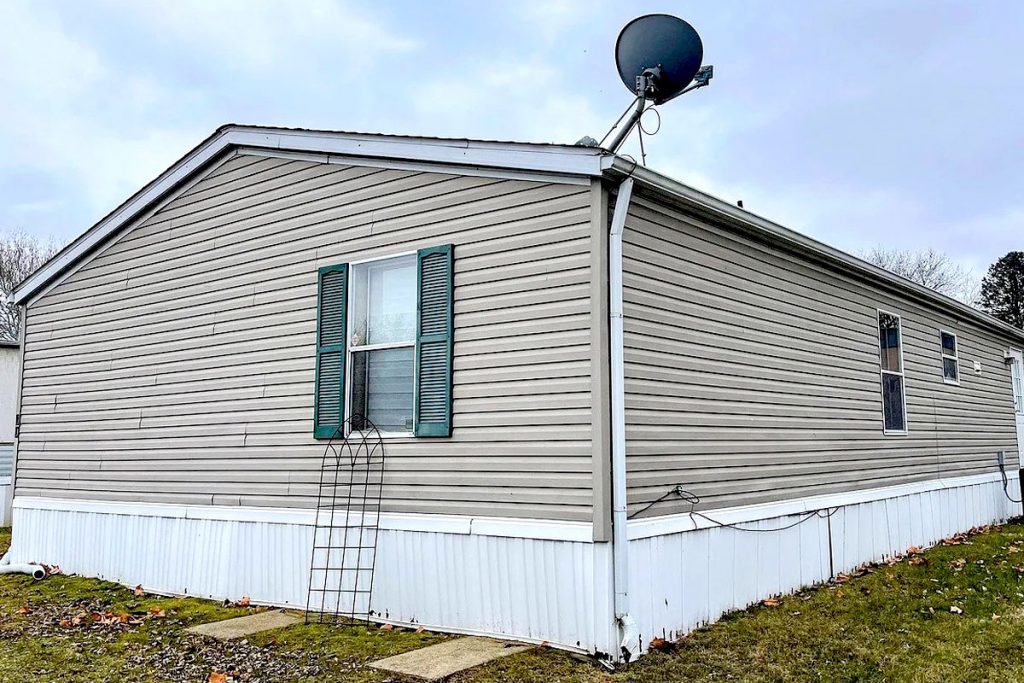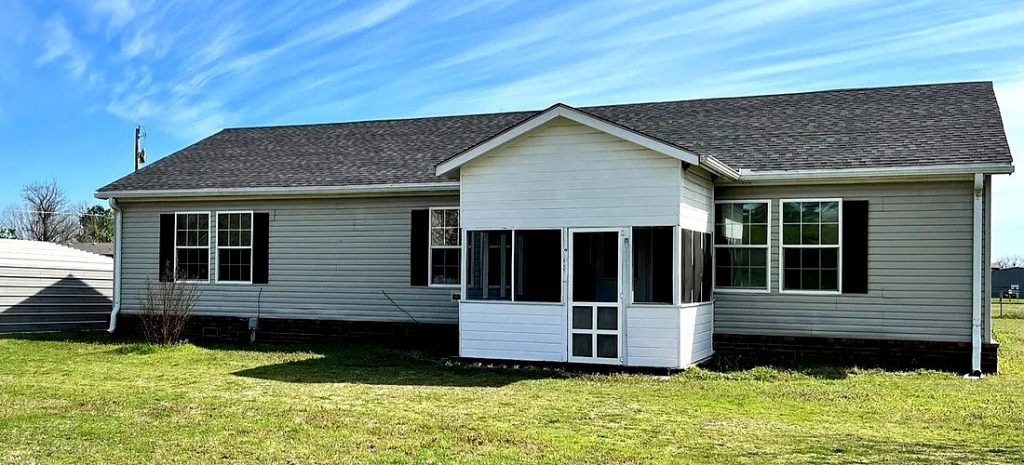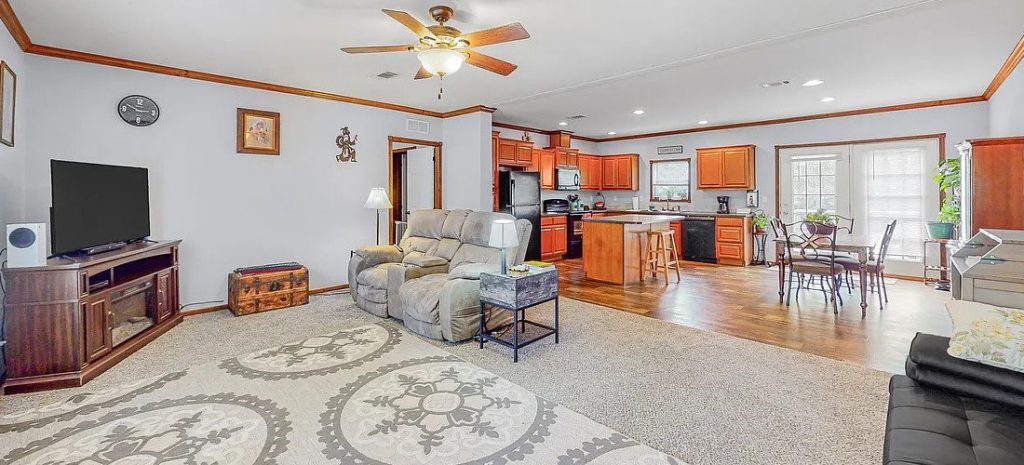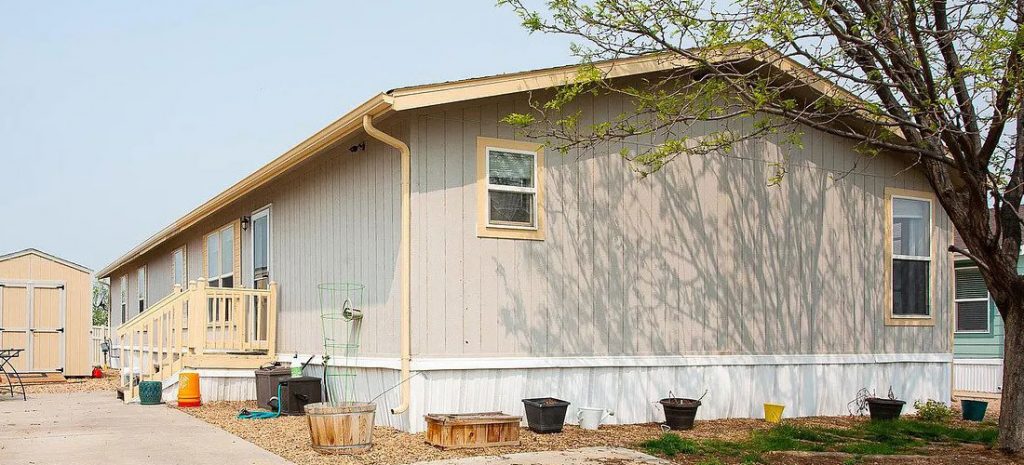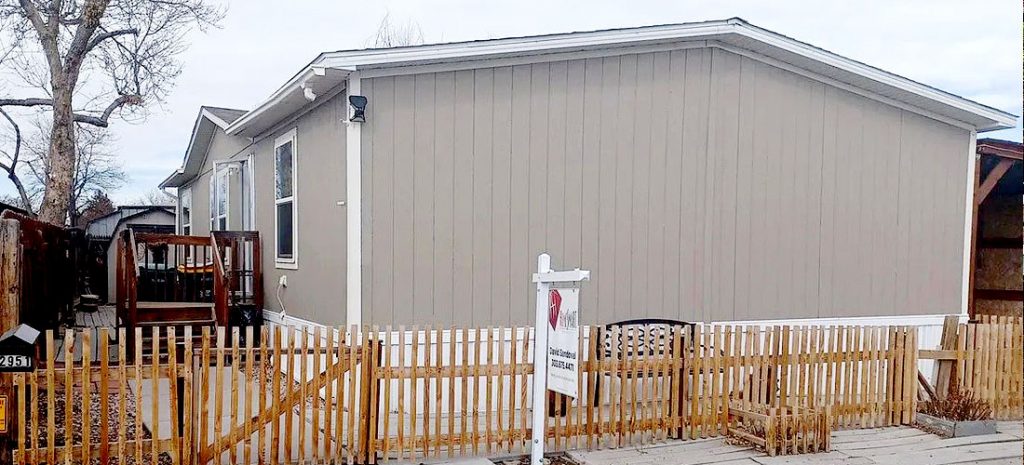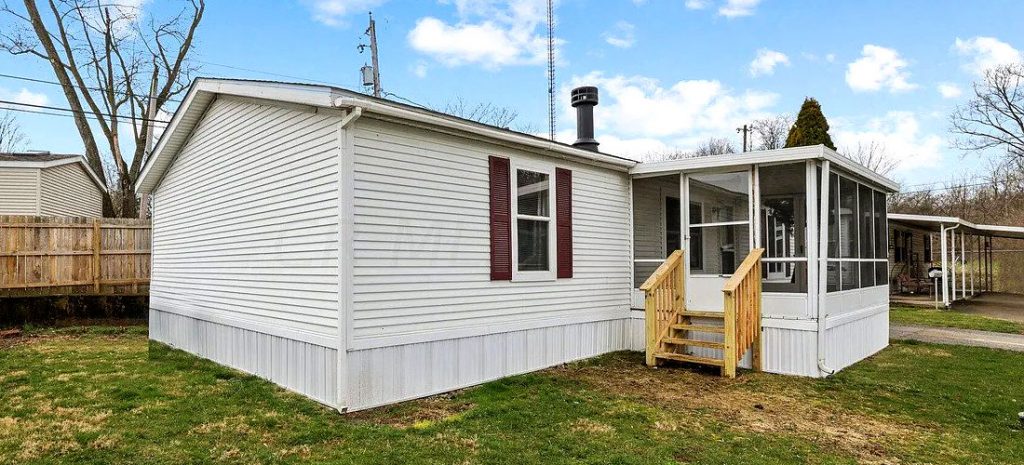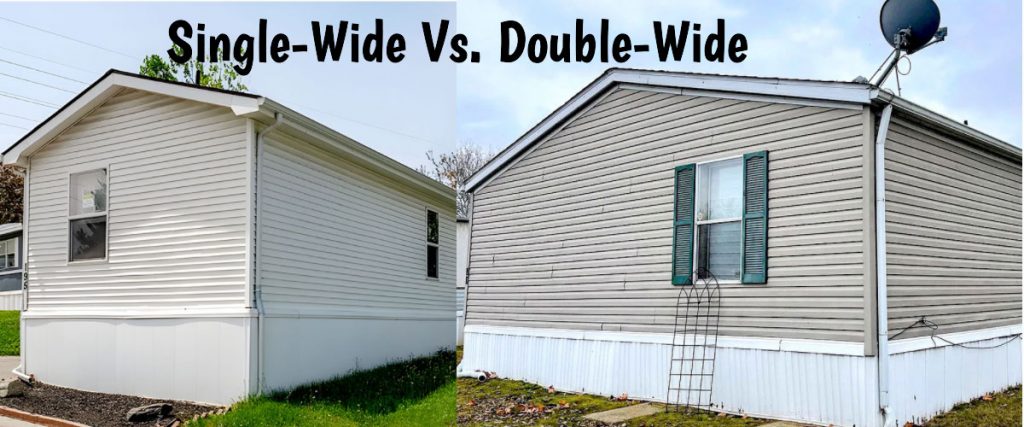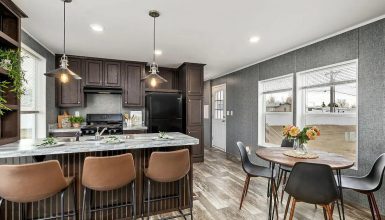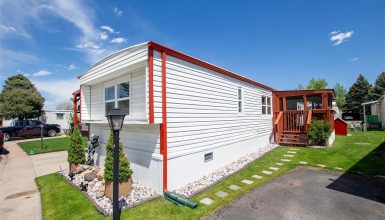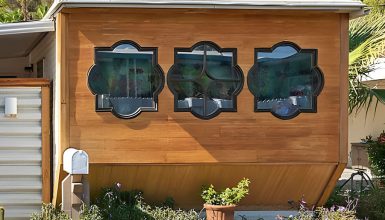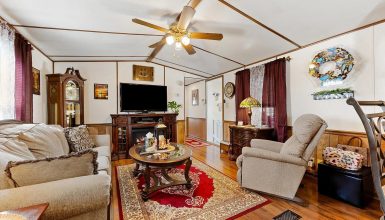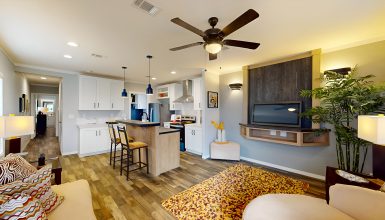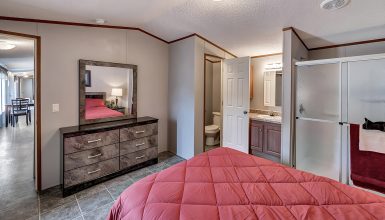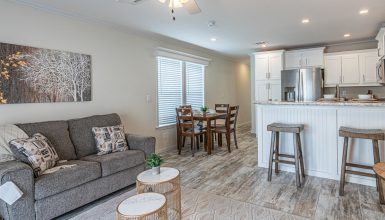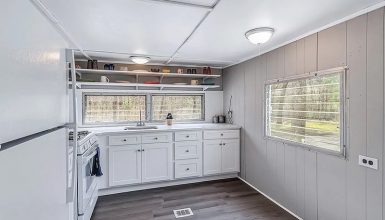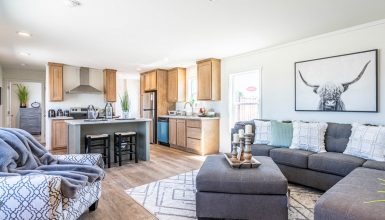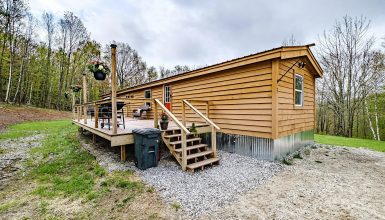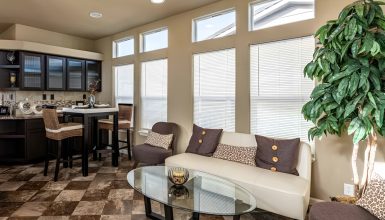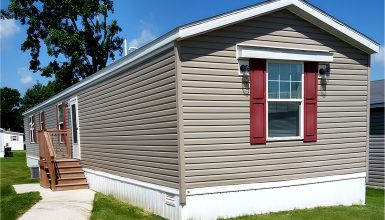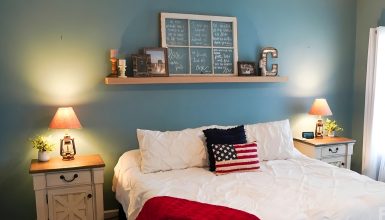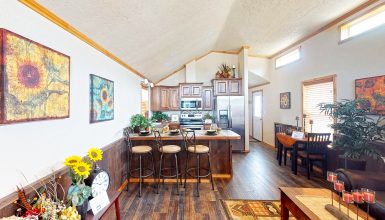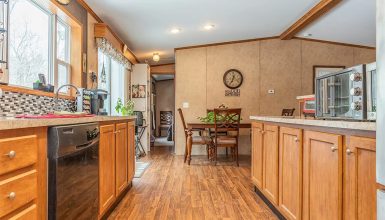Mobile homes, also known as manufactured homes, are a type of residence built entirely in a factory. They’re movable, although they aren’t moved frequently once installed on a site. But not all mobile homes are created equal – there’s the single-wide, and then there’s the double-wide. So, what’s the difference? Let’s dive in!
Aspect | Single-Wide | Double-Wide |
Dimensions | Smaller, typically up to 18 feet wide and 90 feet long. Around 500 to 1300 sq. ft. | Larger, usually up to 36 feet wide and 90 feet long. Around 1,000 to 2,500 sq. ft. |
Cost Comparison | Generally cheaper both in purchase price and maintenance costs. Price between $45,000 and $90,000, brand new | More expensive both in purchase and maintenance, but provide better value for space. $70,000 to $150,000 for a brand-new unit. |
Features | Most come with one to three bedrooms, a living area, a kitchen, and one or two bathrooms. | More space for additional amenities, luxurious living |
Moving | Easier and cheaper to move, with some limitations | More complex and costly to transport due to size |
Energy Efficiency | Less energy consumption due to size, efficiency depends on insulation and appliances | More energy consumption, but can be offset by efficient insulation and appliances |
Resale Value | Good investment with reasonable resale value if well-maintained | Higher initial cost, but potentially higher resale value and rental income |
Single-Wide Mobile Homes
Let’s think of a single-wide mobile home as a cozy studio apartment. They typically span 18 feet or less in width and about 80 feet in length. That’s about the size of a city bus! The size, though, is part of its charm. The limited square footage, around 500 to 1300 sq. ft., encourages smart, innovative design to maximize every inch.
But don’t let the size fool you. These homes often boast surprising roominess. The floor plans are designed to maximize space and flow. Most come with one to three bedrooms, a living area, a kitchen, and one or two bathrooms. The layout gives you the intimacy of a traditional home with a touch of modern ingenuity.
What about the structure? These homes are factory-built. This means they stick to strict quality control standards. The framework is typically sturdy steel, with walls and roofs constructed from durable, weather-resistant materials. They’re built to last, and they can certainly withstand the elements.
And finally, the design. One of the beauties of single-wide homes is their design flexibility. You can choose from various exterior designs, from classic vinyl siding to rustic wood finishes and even chic modern aesthetics. The choice is yours to shape it into your dream home.
Costs
First things first: the purchase price. The beauty of single-wide mobile homes is their affordability. Currently, you’re looking at an average cost between $45,000 and $90,000, brand new. Of course, the price can swing either way, depending on the size, location, and features you choose. If you’re considering a used mobile home, you can often find one for even less.
Next up, let’s talk maintenance. Every home needs upkeep, and single-wides are no exception. The good news? The smaller size means lower maintenance costs. A fresh coat of paint, repairs, or updates won’t break the bank. Typically, you’re looking at an annual fee of around 1% to 3% of the home’s initial price. It’s the price of keeping your home in tip-top shape.
Lastly, property taxes. Here’s where another benefit of single-wide shines through. The tax rate is often lower than a conventional home because they’re considered personal property, not real estate. Of course, the exact amount depends on your local tax laws. Still, generally, it’s a money-saving aspect of going the single-wide route.
Features
What’s inside a single-wide mobile home? You’d be amazed by the interior design of modern single-wide homes. Picture warm, inviting spaces cleverly designed to maximize every square foot. Open-concept floor plans are standard, allowing natural light to flow throughout the home, making it feel larger and brighter. A touch of luxury isn’t uncommon, with options for hardwood floors, crown molding, and other upscale finishes.
And what about amenities and appliances? They’re compact but fully functional. Most single-wide homes have a complete kitchen setup – refrigerator, stove, and oven. Some even boast dishwashers and in-unit washers and dryers. The bathrooms usually feature full tubs and showers. Don’t let the size deceive you; these homes pack in all the necessities and a touch of luxury.
Lastly, the cherry on top: customization options. This is where your creativity gets to play. You can choose your cabinetry, pick your flooring, select your countertops, and much more. Want a rustic vibe? Go for it. Prefer a modern minimalist style? You got it. With a single-wide, you can express your unique style and make it your own.
Moving
Think about moving a single-wide mobile home. How does it work? Let’s break it down.
First off, ease of relocation. Here’s where the term ‘mobile’ really shines. Single-wides, by design, are meant to be moved. They’re compact, easy to hitch to a large truck, and hit the road. The streamlined shape allows for a smoother, more secure journey. Whether it’s to a sunny beachfront plot or a peaceful countryside lot, your home is ready for adventure.
Next up is the cost of relocation. Moving isn’t free, but it’s often more affordable than you might think. Expenses can range from $1,000 to $5,000, depending on distance and setup fees at the new location. It’s a small price to pay for the ability to change your scenery when the mood strikes.
Energy Efficiency
Let’s discuss something critical to your home’s comfort and wallet: energy efficiency. How does a single-wide mobile home stack up?
Starting with insulation and weatherization. The single-wide homes have made great strides. Today’s models feature better insulation in walls, floors, and ceilings, keeping the warm air in during winter and out during summer. Plus, weatherization features like weather-stripping and double-pane windows help to reduce drafts and improve efficiency.
Lastly, consider the appliances. These homes come equipped with energy-efficient appliances. We’re talking about refrigerators, stoves, water heaters, and heating and cooling systems designed to use less electricity and save money. It’s all part of making the home as efficient as it is comfortable.
Resale Value
It can be a wise investment, but keeping expectations realistic is crucial. Resale value can vary based on the home’s condition, upgrades, and location. Generally, well-maintained single-wides in good areas can hold their value quite well.
As for long-term investment potential, single-wides can shine! They’re an affordable housing option that’s always in demand. They can provide a stable return if maintained well, especially if you’re in the rental business.
Overall
So, suppose you value practicality, affordability, and flexibility. In that case, a single-wide mobile home might be your dream come true. They offer a unique blend of cozy living with the freedom to roam, all without breaking the bank. That’s quite a package, wouldn’t you agree?
Double-Wide Mobile Homes
Double-wide mobile homes are like the spacious loft apartments of the mobile home world. They are two single-wide units merged side by side. We’re talking about a width of up to 36 feet and a length that can stretch to 90 feet. This translates to a generous 1,000 to 2,500 sq. ft. of living space. The extra square footage allows for larger rooms, more bedrooms, and often, an additional bathroom or two. Furthermore, the floor plans can feel akin to a traditional single-family home, all under the banner of mobile living.
Speaking of exteriors, let’s talk design and features. With more space to work with, double-wide homes offer more possibilities. You might find a front porch, carport, or small deck or patio space. As for design, the sky’s the limit! Whether it’s classic vinyl siding, rustic wood finishes, or sleek modern aesthetics, there are options to suit every taste.
Cost
Double-wide homes are naturally pricier than single-wide due to their larger size. However, they’re still affordable compared to a traditional site-built home. You can expect to pay anywhere from $70,000 to $150,000 for a brand-new unit. Of course, used models can be found for less.
It’s no surprise that double-wide homes generally cost more to maintain than single ones. But they are generally less costly to maintain than a traditional home. The expenses will depend on the home’s condition and your specific upkeep habits. However, expect to spend about 1% to 3% of the home’s initial price annually. Furthermore, regular maintenance can help prolong the home’s lifespan and preserve its value.
Lastly, the property taxes. As with single-wide, double-wide homes are often considered personal property rather than real estate, resulting in typically lower taxes. However, if your double-wide is at a piece of land you own, it may be considered real estate and taxed accordingly. Local tax laws vary, so it’s worth getting acquainted with them.
Features
Let’s step inside a double-wide mobile home. What will we find? How can you make it your own?
First is interior design. With more space, there’s room to play with design. Many double-wides offer open-concept living areas, spacious kitchens, and larger bedrooms. You might even find a separate laundry room or a home office. And with more oversized windows, there’s plenty of natural light to brighten up the space.
Next, the amenities and appliances. You’ll find full-size appliances and perhaps even a dishwasher in many double-wides. You may also get luxury features like a garden tub in the bathroom or a kitchen island. These homes can come with all the comforts of a traditional house but in a mobile package.
Finally, customization options. With a double-wide, there’s a world of potential to personalize your space. Want hardwood floors? Done. Fancy a fireplace? You got it. Crave a walk-in closet? It’s possible. With numerous options for finishes, fixtures, and layouts, you can create a home that’s uniquely you.
Moving
Let’s talk about a unique aspect of mobile homes: the ability to relocate. How does this work with a double-wide?
First up is the ease of relocation. While it’s possible to move a double-wide, it’s a bigger task than moving a single-wide. These homes are larger and heavier, requiring more resources to transport. You’ll likely need a professional mover with the right equipment and a few days to finish the job.
Then there’s the cost of relocation. Given the size, moving a double-wide will cost more than moving a single-wide. Prices can range from a few thousand dollars to over $10,000, depending on the distance and other factors. It’s an investment, but for some, the flexibility to move your home is worth it.
Energy Efficiency
Double-wides are more extensive, so they naturally consume more energy. More rooms to light and larger areas to heat or cool it can add up. It’s like moving from a compact car to an SUV.
However, don’t count them out just yet! Like their single-wide siblings, double-wide homes are designed to be energy efficient. With quality insulation and weather stripping, these homes are primed to keep you cozy in winter and cool in summer. They prove that living large doesn’t have to mean large energy bills.
Next, energy-efficient appliances. These homes come fitted with Energy Star appliances. These nifty machines use less energy, helping to reduce your carbon footprint and save you money on utility bills. It’s a win-win!
Resale Value
Now, let’s look at your double-wide home’s financial future. What’s the deal with resale value?
First off, the depreciation rate. Like any other type of home, mobile homes depreciate over time. However, the depreciation rate for double-wides can be slower than that of single-wides, primarily due to their size and higher initial cost.
Next, let’s talk about factors affecting resale value. Location plays a significant role here – a double-wide in a well-maintained park or on a desirable piece of land can hold its value well. Other factors include the home’s condition, age, and any upgrades you’ve made. Regular maintenance and tasteful renovations can help maintain, or even increase, your home’s value over time.
Lastly, we have market trends. The demand for affordable, flexible housing solutions like double-wide homes has grown. This trend could help buoy the resale value of your double-wide. It’s worth watching the market to understand how these trends could affect your home’s value.
Overall
In short, a double-wide mobile home is a flexible, affordable, and comfortable housing solution worth considering. Whether you’re a growing family needing more space, a retiree looking for a low-maintenance lifestyle, or anyone in between, a double-wide could be your ticket to a dream home just right for you.
Should I Buy a Single Wide or a Double Wide?
Choosing a mobile home is a bit like choosing a new pair of shoes. It has to fit well, match your style, and be within your budget. But instead of considering leather or laces, we’re thinking about size, cost, and lifestyle. So, what should you consider when deciding between a single-wide or double-wide mobile home?
1. Lifestyle and Household Size
First off, think about your lifestyle and the size of your household. A single-wide might be the perfect fit if you’re a single person or even a couple. They are cozier, easier to maintain, and generally more affordable. It’s like the perfect pair of running shoes – sleek, practical, and easy to manage.
But if your family is a bit larger, or you just love to host big holiday dinners, a double-wide could be more your speed. Double-wides offer more room, comfort, and features like sturdy hiking boots. They’re designed to handle a heavier load and provide extra space when needed.
2. Budget
Next, let’s talk money. Budget is vital when deciding on a mobile home. Single-wides usually have a lower purchase price and fewer maintenance costs. They’re like trusty sneakers that won’t break the bank. On the other hand, double-wides can be more of an investment upfront. They’re more like those designer boots with a higher price tag but also offer higher quality and more features.
3. Future Plans
Then, consider your future plans. If you intend to move your mobile home in the future, a single-wide might be a better bet. It’s generally easier and less expensive to transport. But a double-wide could be a good investment if you settle in one spot. They offer a more traditional living experience and can hold their value well over time.
4. Location Constraints
Lastly, think about location constraints. Some parks or lots may have size restrictions that could influence your decision. Single-wides, being smaller, will fit into more places. But double-wides can offer a greater sense of permanence and are often more accepted in communities with more restrictions.
Conclusion
Just like with shoes, the best mobile home for you depends on what you need, what you want, and what you can afford. It’s all about making the choice that makes the most sense for you. So, take your time, consider all the factors, and make the choice that feels like the perfect fit. After all, home is where your heart is, right?

